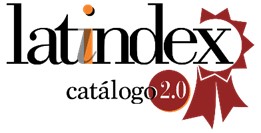Applets as artefacts of semiotic mediation in preservice elementary teacher education
DOI:
https://doi.org/10.48489/quadrante.23014Keywords:
semiotic mediation, applets, mathematics’ learning, initial teacher educationAbstract
Assuming that the recognition of the potential of a given artefact plays a crucial role in the planning of activities that contemplates its use, this paper aims to characterize the practice of using applets in a curricular unit of elementary teachers’ course. The main purpose is to understand to what extent students’ identification of the semiotic potential of the applets used can facilitate the efficient use of these resources in the planning of didactic approaches, aiming mathematics’ learning. The research methods are qualitative, based on a design research paradigm, with the participation of 20 students in basic education course and one researcher. Data were collected based on the field notes produced by the researcher and on the students' works, developed in groups or individually. Data show that the activities developed allowed future teachers to analyze semiotic potential of several applets, identifying the knowledge and the mathematical procedures produced with its use and the influence that the methodological approach and that teachers’ orchestration assume in the construction of that knowledge. That analysis was important for students to create their own approaches to applets’ use, by assuming those two dimensions: the potential brought by the applet to evoke mathematical knowledge and the relevance of the didactical approach orchestrated for its use.
References
Amado, J. (2017). Manual de investigação qualitativa em educação (3.ª ed.). Coimbra: Imprensa da Universidade de Coimbra.
Andrade, A. P. S. (2014). Applets na aprendizagem matemática em situação de aulas de apoio ao estudo (Relatório Final de Mestrado). Universidade de Aveiro, Aveiro.
Bartolini Bussi, M. G. (1998). Verbal interaction in mathematics classroom: A Vygotskian analysis. In H. Steinbring, M. G. Bartolini Bussi, & A. Sierpinska (Eds.), Language and communication in mathematics classroom (pp. 65–84). Reston, VA: NCTM.
Bartolini Bussi, M. G., & Mariotti, M. A. (2008). Semiotic mediation in the mathematics classroom: Artefacts and signs after a Vygotskian perspective. In L. English, M. Bartolini Bussi, G. Jones, R. Lesh & D. Tirosh (Eds.), Handbook of international research in mathematics education, second revised edition (pp. 746-783). Mahwah, NJ: Lawrence Erlbaum.
Bereiter, C. (2002). Design research for sustained innovation. Cognitive Studies, Bulletin of the Japanese Cognitive Science Society, 9(3), 321-327.
Bivar, A., Grosso, C., Oliveira, F., Loura, L., & Timóteo, M. C. (2013). Programa de Matemática -Ensino Básico. Lisboa: Ministério da Educação e Ciência.
Bogdan, R., & Biklen, S. (1994). Investigação qualitativa em educação – Uma introdução à teoria e aos métodos. Porto: Porto Editora.
Daher, W. (2009). Preservice teachers' perceptions of applets for solving mathematical problems: Need, difficulties and functions. Educational Technology & Society, 12(4), 383–395.
Drijvers, P., Doorman, M., Boon, P., Reed, H., & Gravemeijer, K. (2010). The teacher and the tool: Instrumental orchestrations in the technology-rich mathematics classroom. Educational Studies in Mathematics, 75(2), 213-234.
Drijvers, P., Kieran, C., & Mariotti, M. A. (2009). Integrating technology into mathematics education: Theoretical perspectives. In C. Hoyles & J.-B. Lagrange (Eds.), Digital technologies and mathematics teaching and learning: Rethinking the terrain (pp. 89–132). New York: Springer.
Galvão, C., Ponte, J. P., & Jonis, M. (2018). Os professores e a sua formação inicial. In C. Galvão & J. P. Ponte (Orgs.), Práticas de formação inicial de professores: Participantes e dinâmicas (pp.25-46). Lisboa: IE-UL.
Kozulin, A. (2003). Psychological tools and mediated learning. In A. Kozulin, B. Gindis, V. S. Ageyev & S. M. Miller (Eds), Vygotsky’s educational theory in cultural context (pp. 15-38). Cambridge: Cambridge University Press.
Mariotti, M. A. (2009). Artifacts and signs after a Vygotskian perspective: The role of the teacher. ZDM Mathematics Education, 41, 427-440.
Mariotti, M. A., & Maffia, A. (2018). From using artefacts to mathematical meanings: The teacher’s role in the semiotic mediation process. Didattica della Matematica. Dalle Ricerche alle Pratiche d’Aula, 3, 50-63.
Matos, J. M., & Serrazina, L. (1996). O Geoplano na sala de aula. Lisboa: APM.
Oliveira, E. (2014). A utilização das Aplicações Interativas no ensino e aprendizagem das equações do 1.º grau (Relatório Final de Mestrado). Faculdade de Ciências e Tecnologia da Universidade Nova de Lisboa, Monte da Caparica.
Peixoto, J., & Carvalho, R. (2011). Mediação pedagógica midiatizada pelas tecnologias? Teoria e Prática da Educação, 14(1), 31-38.
Piteira, G., & Matos, J. F. (2000). Ambientes dinâmicos de geometria como artefactos mediadores para a aprendizagem da geometria. In M. J. Saraiva, M. I. Coelho & J. M. Matos (Orgs.), Ensino e Aprendizagem da Geometria (pp. 61-72). Covilhã: SPCE-SEM.
Rabardel, P. (1995). Les hommes et les technologies – Approche cognitive des instruments contemporains. Paris: A. Colin.
Vygotsky, L. S. (1978). Mind in society. The development of higher psychological processes. Cambridge, MA: Harvard University Press.










